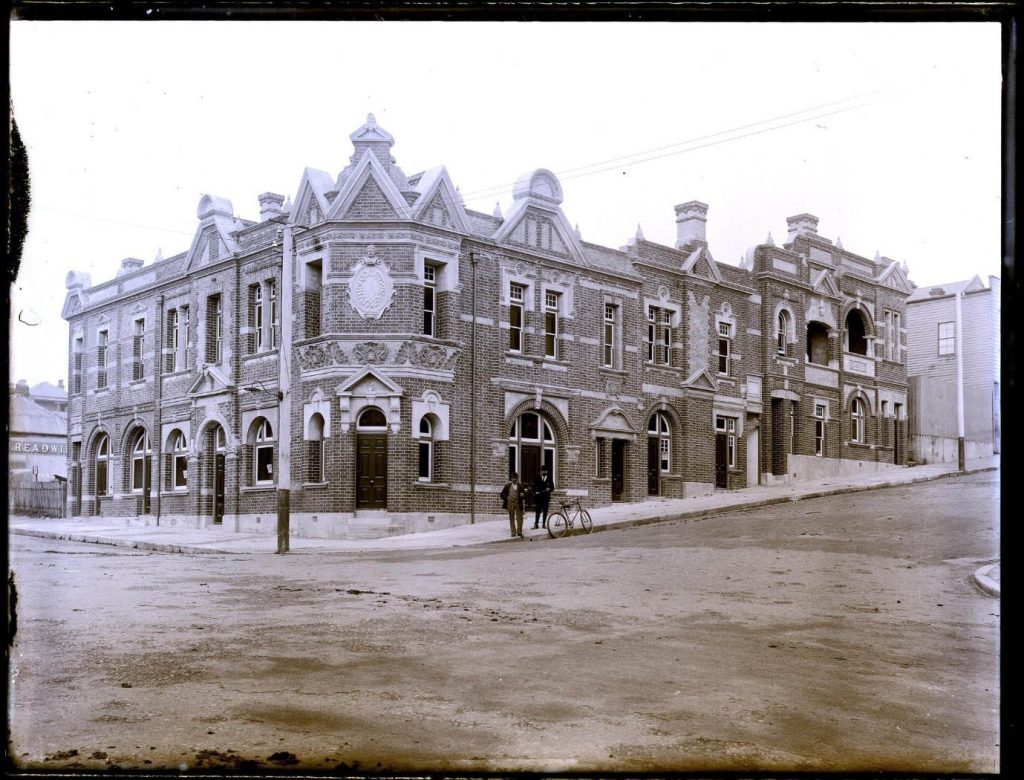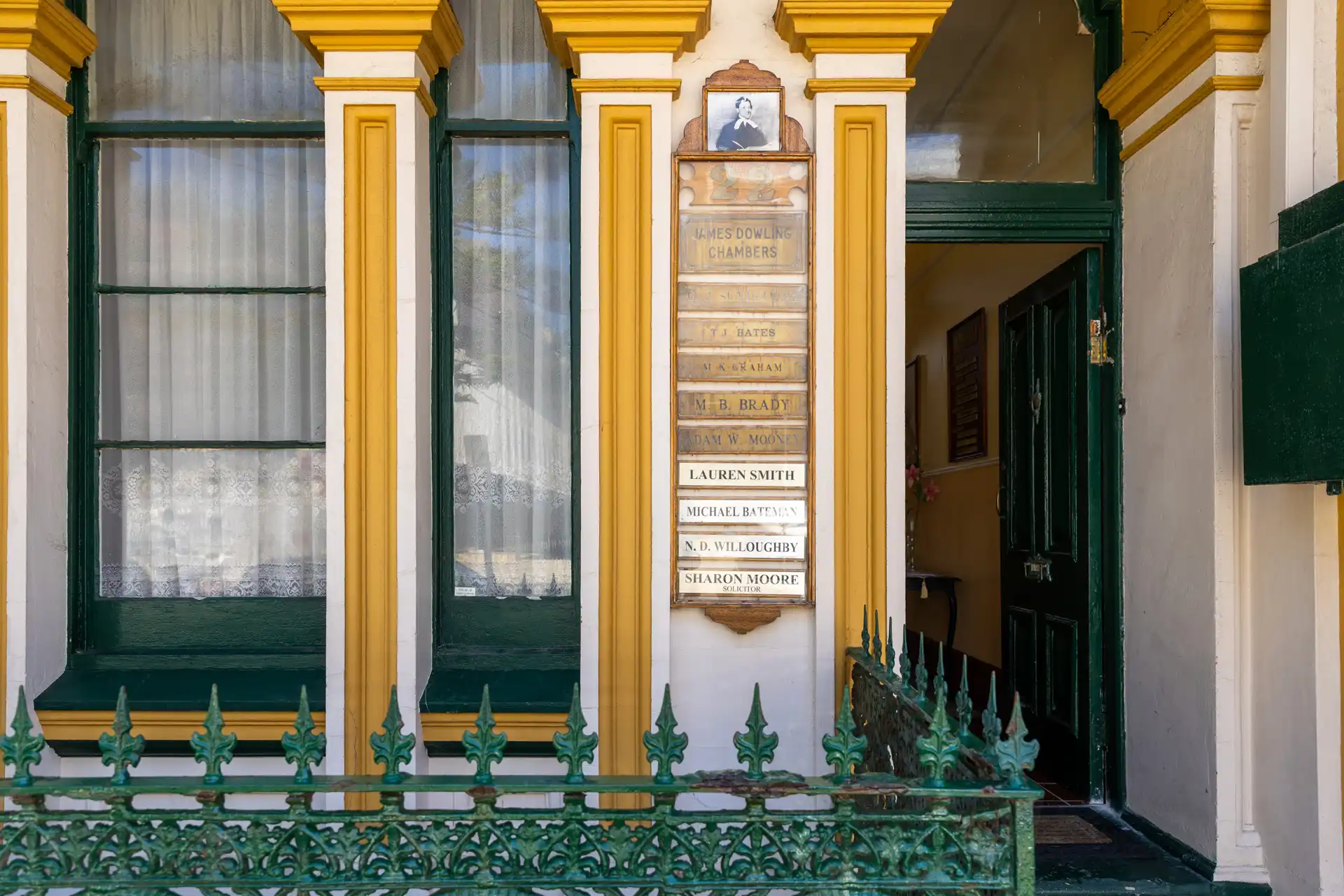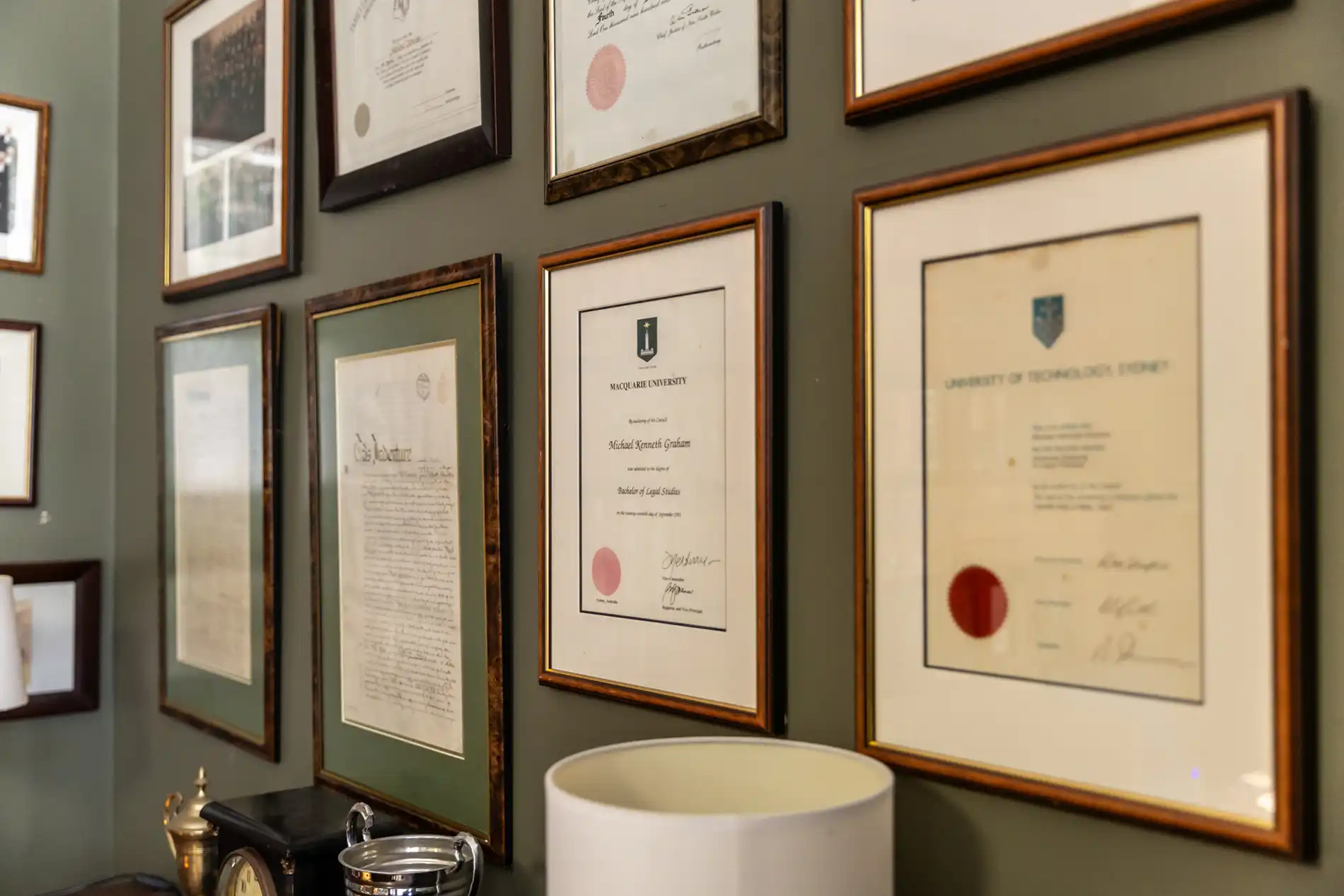Our History
22 Church Street, Newcastle, operating currently as Sir James Dowling Chambers, maintains one of the greatest legal legacies of any building in Newcastle.
Traceable back as far as at least the early 1960’s, the building has served as a chambers to many of the great legal minds Newcastle has produced.
During his time in Newcastle, former High Court Justice Michael Hudson McHugh AC QC kept chambers on the first floor of 22 Church Street. At the time, he shared the premises with a medical specialist on the ground floor and a tenant on the third floor. He had no clerk and paid the doctor’s secretary £1 a week to take telephone messages (per Bar News – Winter, 2004).
With the opening of the Family Law Courts building on Bolton Street, the 1980’s and 1990’s saw the genuine commencement of 22 Church Street as the type of chambers that it is today.
During those decades, such esteemed contributors to the Newcastle legal community as former District Court Judge Ralph Coolahan and Newcastle’s first Public Defender, Geoffrey James Graham continued to develop the legacy of 22 Church Street.
The late 1990’s and early 2000’s saw an influx of members of the Newcastle Bar. the chambers has played home to several barristers including Michael Bateman and Michael Graham who continue to call Sir James Dowling Chambers home, the late Geoffrey Gorton and current Judge of the Federal Circuit and Family Court of Australia, Her Honour Judge Vivien Carty.
Perhaps the longest serving resident of chambers is stalwart of the Newcastle legal community, Terry Bates. Terry has contributed more than 25 years of service to the Bar, commencing in 1998, all of which has been served from 22 Church Street. Terry’s contribution to 22 Church Street is unlikely to be matched.
In recent years, 22 Church Street has taken in some of the newest members of the Newcastle Bar with the intention of continuing to contribute to what is already one of the longest and richest associations to the impressive legal history of Newcastle.
In 2025, Sir James Dowling Chambers expanded to include an Annex, into the nearby Court Chambers building at 42 Bolton Street.
Court Chambers was constructed in 1898, designed by architect EC Yeomans, whose name features with ornate detailing and bust of a barrister on the “Federation Freestyle” building.
Court Chambers was constructed to house barristers, and is a wonderful acquisition from which to continue the storied history of Sir James Dowling Chambers contribution to the Newcastle legal community. It is a great privilege to continue the legacy of the Bar in Newcastle in representing the community and its surrounds, treading the same boards as those learned counsel who came before us over 120 years ago.

This image was scanned from the original glass negative taken by Ralph Snowball dated 19 August 1998. It is part of the Norm Barney Photographic Collection, held by Special Collections at University of Newcastle.
Traceable back as far as at least the early 1960’s, the building has served as a chambers to many of the great legal minds Newcastle has produced.
During his time in Newcastle, former High Court Justice Michael Hudson McHugh AC QC kept chambers on the first floor of 22 Church Street. At the time, he shared the premises with a medical specialist on the ground floor and a tenant on the third floor. He had no clerk and paid the doctor’s secretary £1 a week to take telephone messages (per Bar News – Winter, 2004).
With the opening of the Family Law Courts building on Bolton Street, the 1980’s and 1990’s saw the genuine commencement of 22 Church Street as the type of chambers that it is today.
During those decades, such esteemed contributors to the Newcastle legal community as former District Court Judge Ralph Coolahan and Newcastle’s first Public Defender, Geoffrey James Graham continued to develop the legacy of 22 Church Street.
The late 1990’s and early 2000’s saw an influx of members of the Newcastle Bar. the chambers has played home to several barristers including Michael Bateman and Michael Graham who continue to call Sir James Dowling Chambers home, the late Geoffrey Gorton and current Judge of the Federal Circuit and Family Court of Australia, Her Honour Judge Vivien Carty.
Perhaps the longest serving resident of chambers is stalwart of the Newcastle legal community, Terry Bates. Terry has contributed more than 25 years of service to the Bar, commencing in 1998, all of which has been served from 22 Church Street. Terry’s contribution to 22 Church Street is unlikely to be matched.
In recent years, 22 Church Street has taken in some of the newest members of the Newcastle Bar with the intention of continuing to contribute to what is already one of the longest and richest associations to the impressive legal history of Newcastle.
In 2025, Sir James Dowling Chambers expanded to include an Annex, into the nearby Court Chambers building at 42 Bolton Street.
Court Chambers was constructed in 1898, designed by architect EC Yeomans, whose name features with ornate detailing and bust of a barrister on the “Federation Freestyle” building.
Court Chambers was constructed to house barristers, and is a wonderful acquisition from which to continue the storied history of Sir James Dowling Chambers contribution to the Newcastle legal community. It is a great privilege to continue the legacy of the Bar in Newcastle in representing the community and its surrounds, treading the same boards as those learned counsel who came before us over 120 years ago.

This image was scanned from the original glass negative taken by Ralph Snowball dated 19 August 1998. It is part of the Norm Barney Photographic Collection, held by Special Collections at University of Newcastle.


Sir James Dowling
James Dowling was born in London on the 25th of November 1787. His father, Vincent, was a native of Queen’s County, Ireland. James was educated at St. Paul’s School, London. After leaving school he was associated with the daily press, and reported the debates in both Houses of Parliament. He was called to the Bar at the Middle Temple, 5 May 1815, and practised for many years on the home circuit and at the Middlesex sessions.
On 6 August 1827, he was named a Judge of the Court of New South Wales and arrived in the colony on 24 February 1828.
Early in 1829, in order to deal with a considerable number of persons who had been committed for trial, it was suggested that the Supreme Court should adjourn its criminal sitting from Sydney to Windsor, Campbelltown and Maitland. On 17 July 1829, Dowling J presided in the Union Inn Maitland, at the first sitting of the Supreme Court of New South Wales elsewhere than in Sydney.
Dowling became Chief Justice on the retirement of Sir James Forbes in July 1837, and was knighted the following year. He was described as “a painstaking Judge, a fluent speaker and shorthand writer, and a learned case lawyer.” As a member of the Legislative Council, he confined himself to legal topics. He injured his health by overwork; obtained leave of absence for two years; and died while making preparations to sail for England, at Darlinghurst, Sydney, on 27 September 1844.



